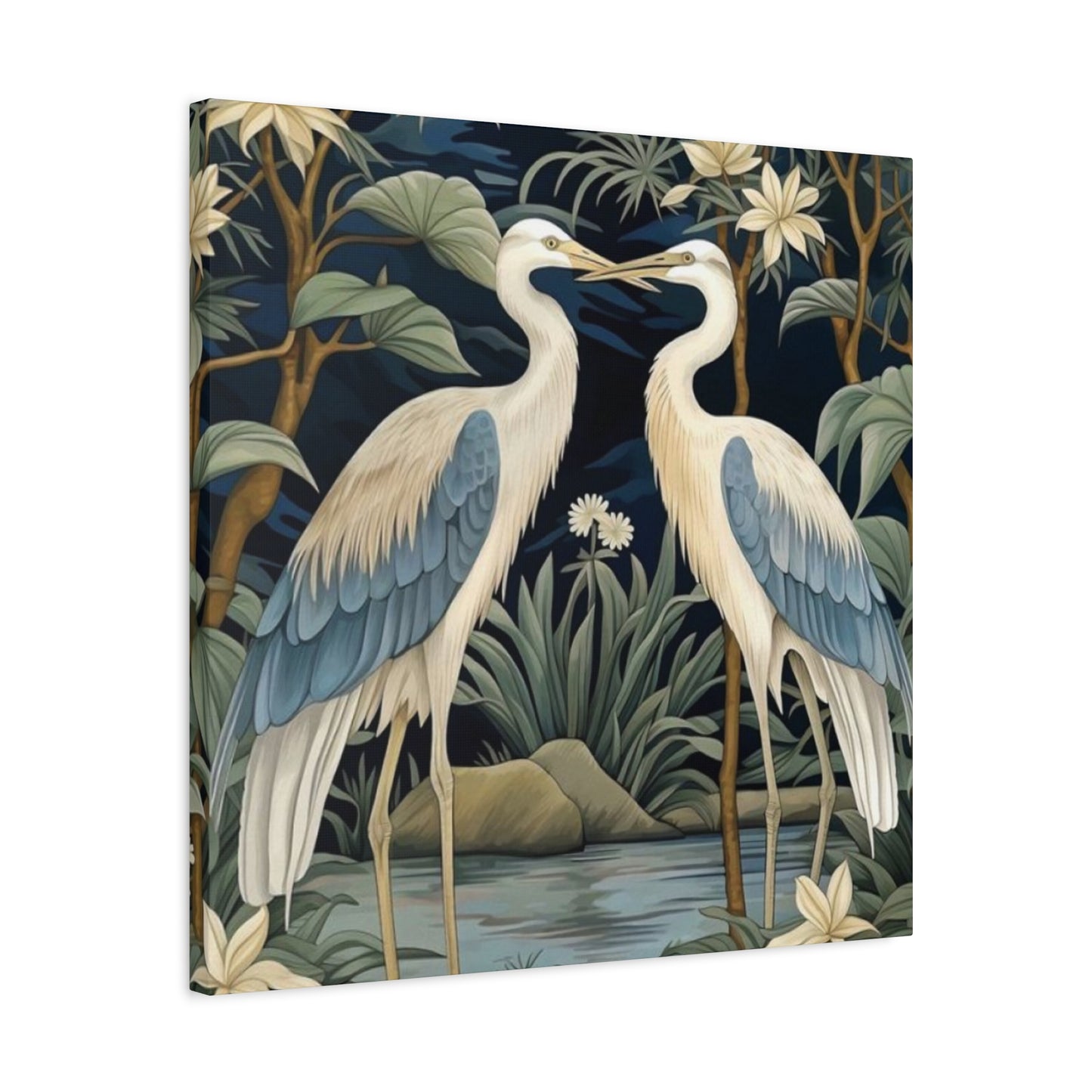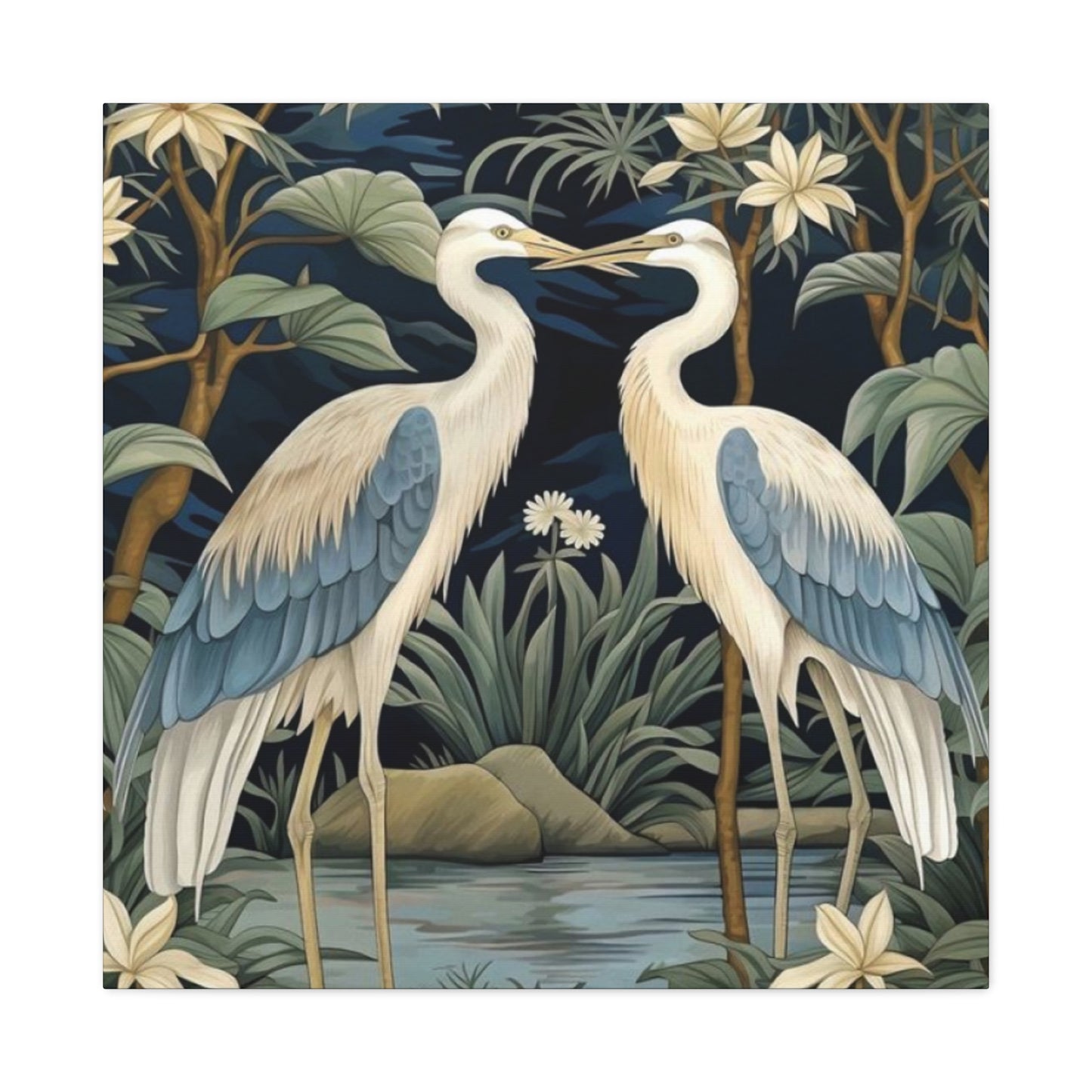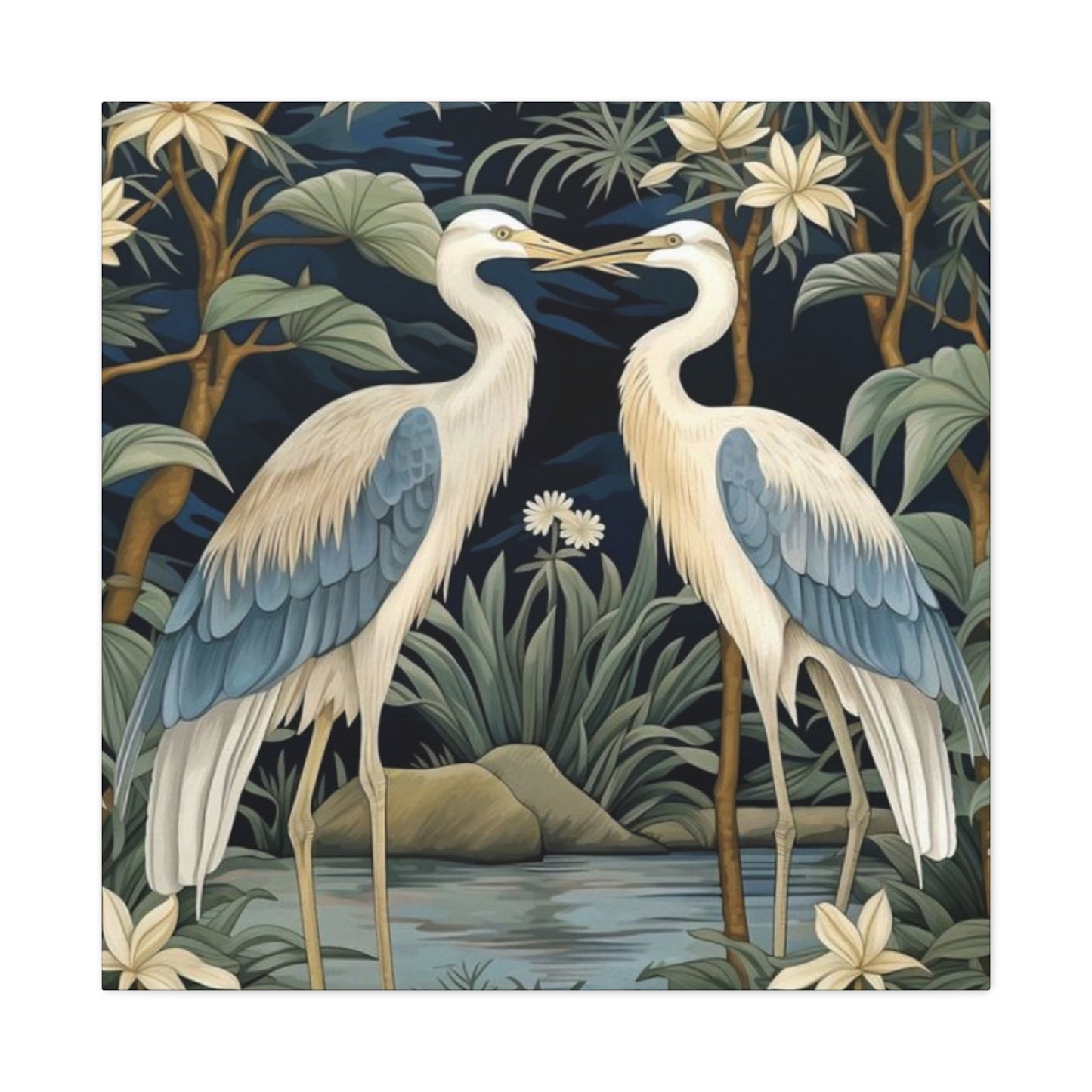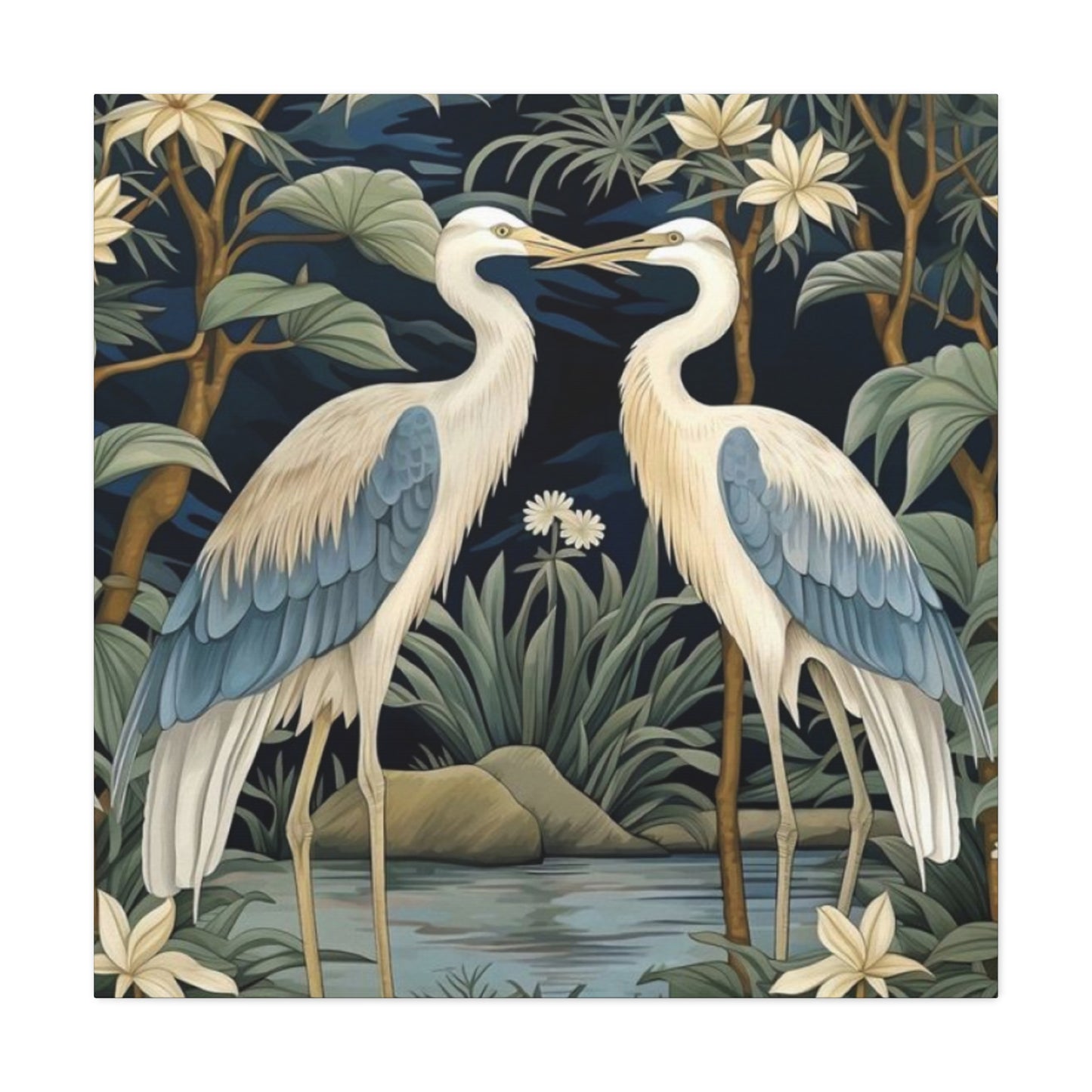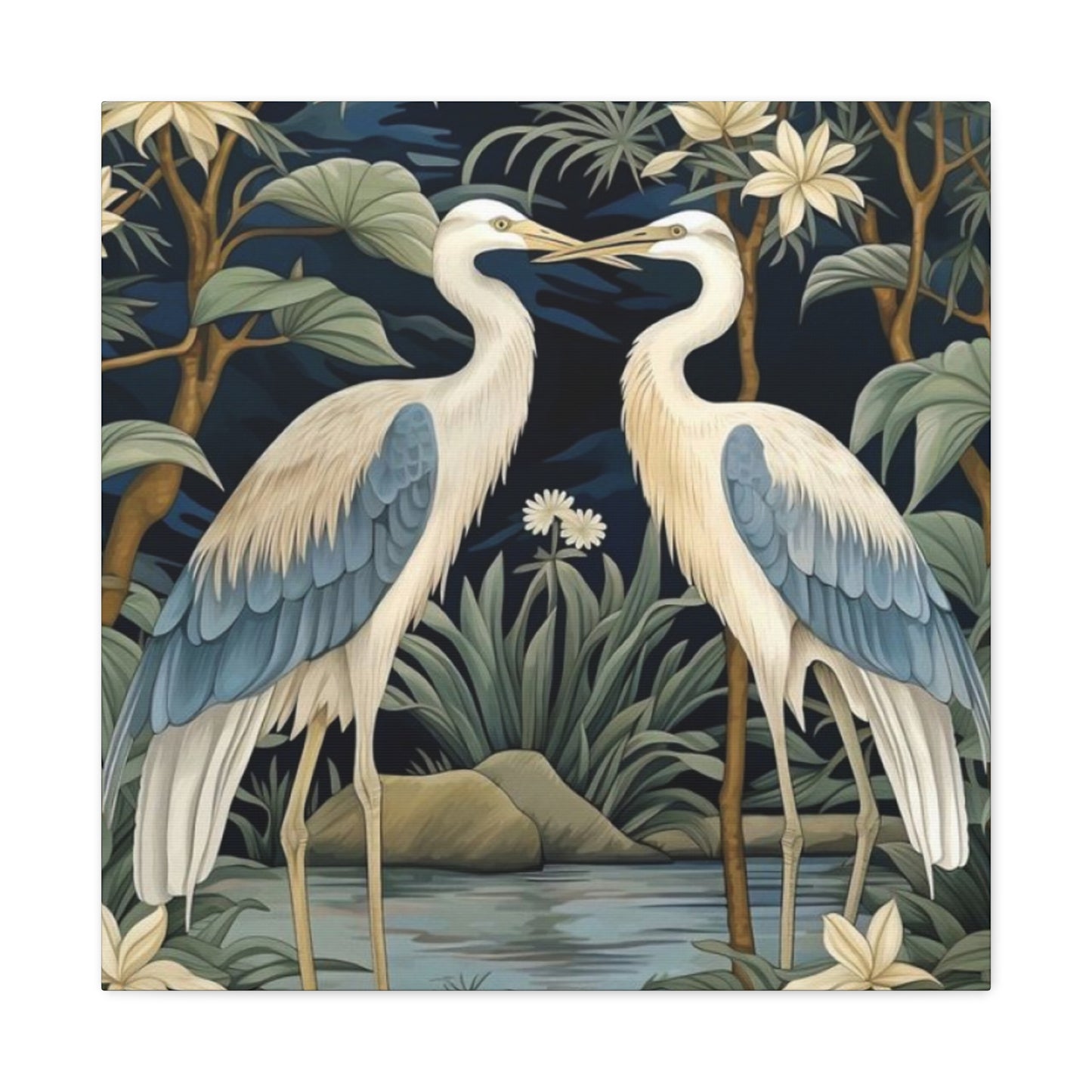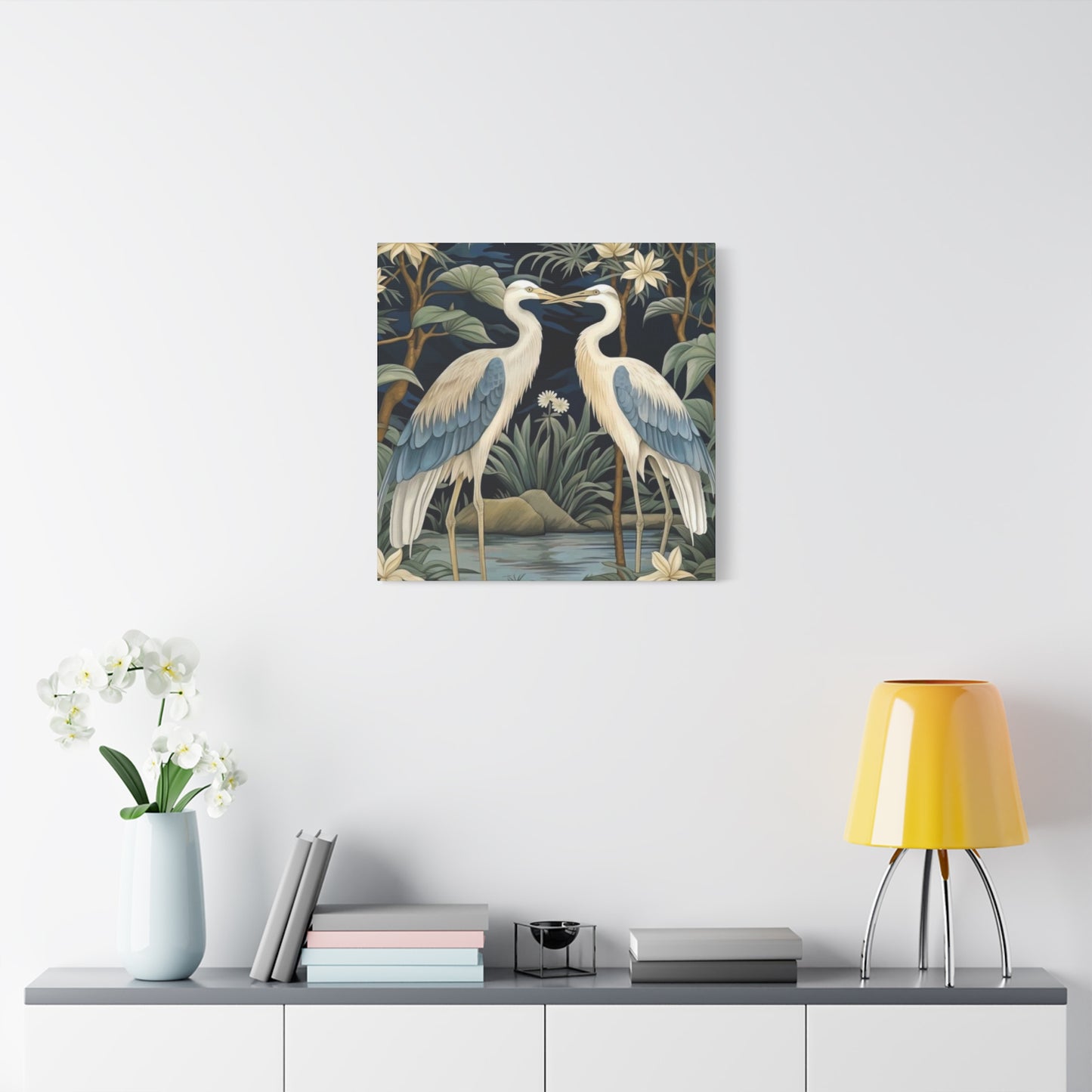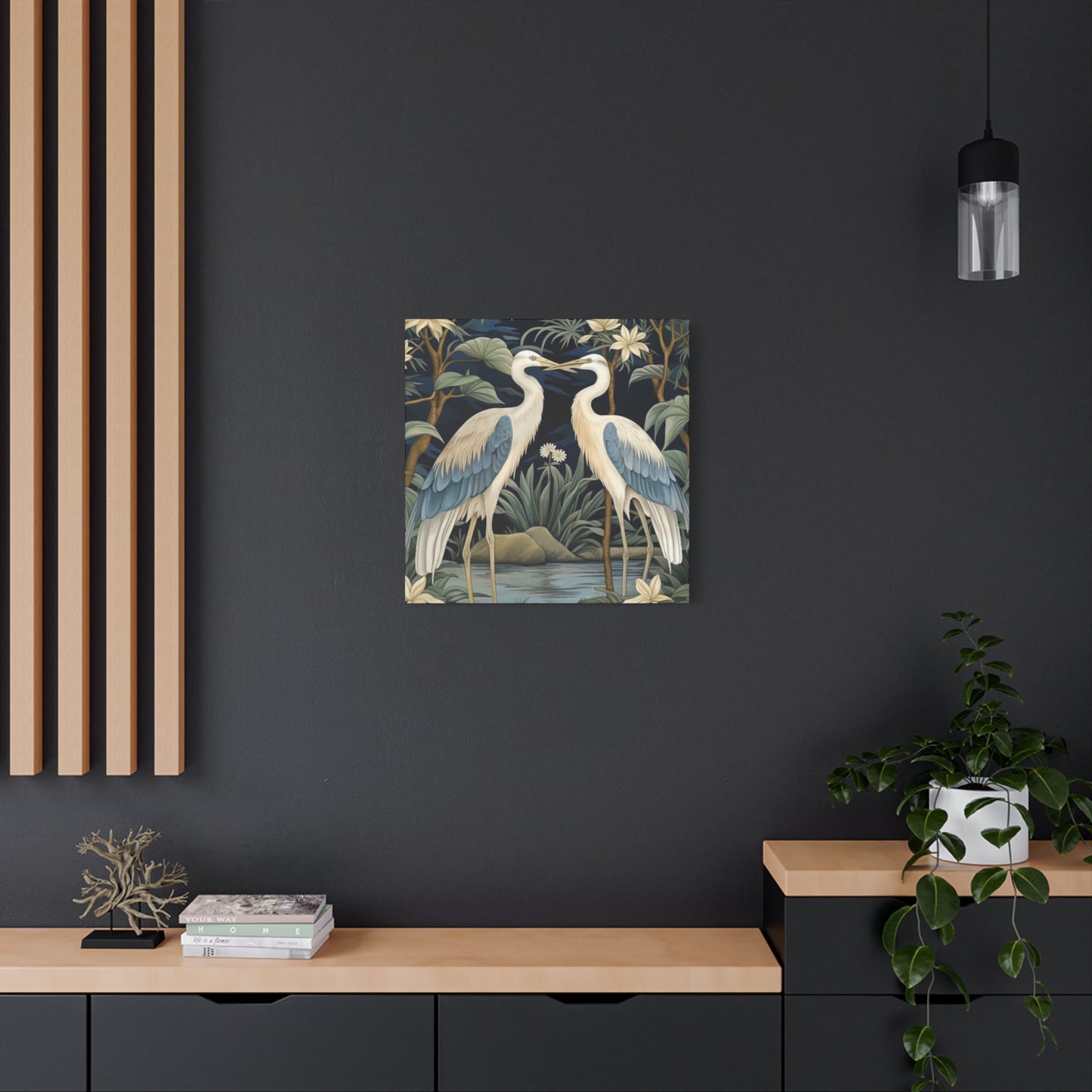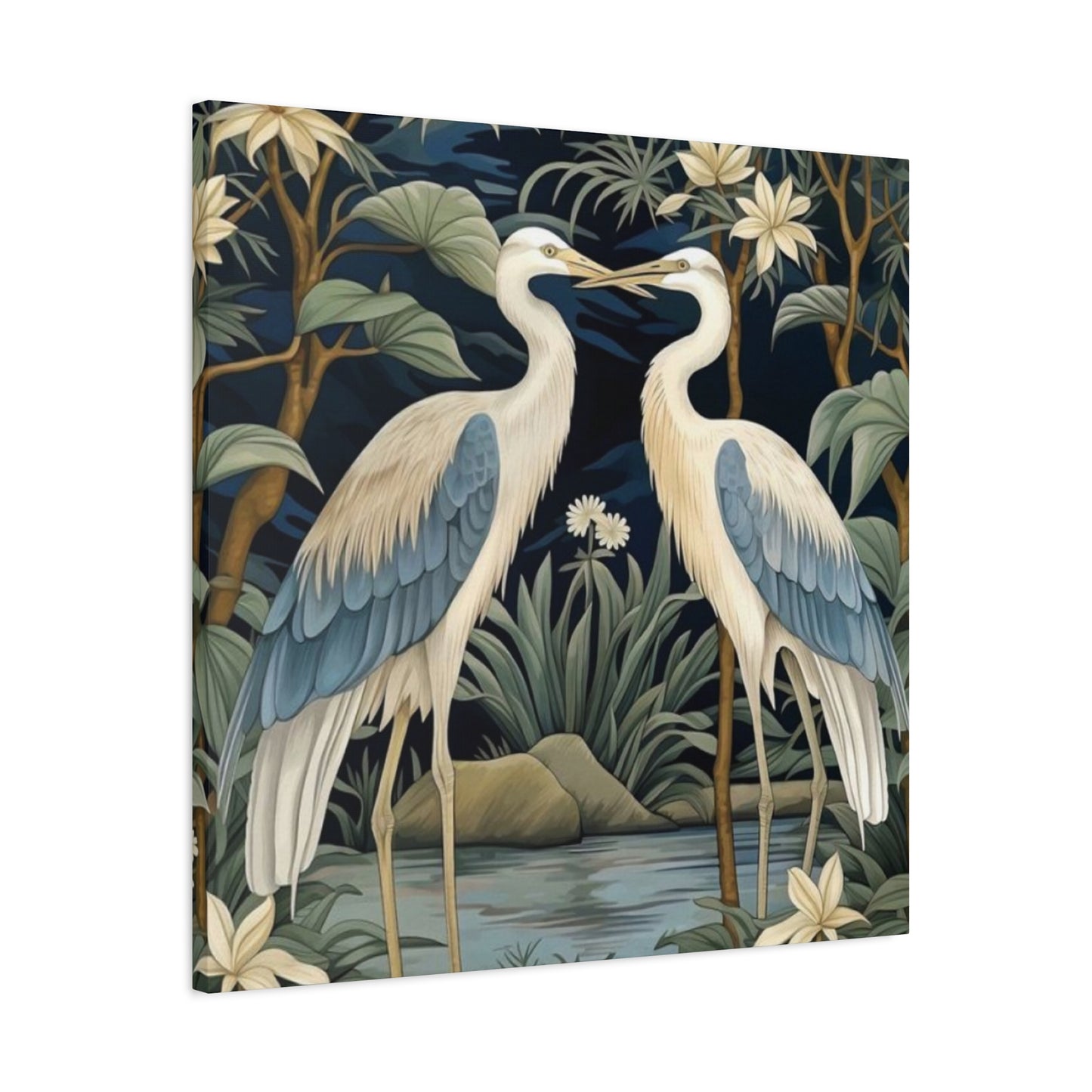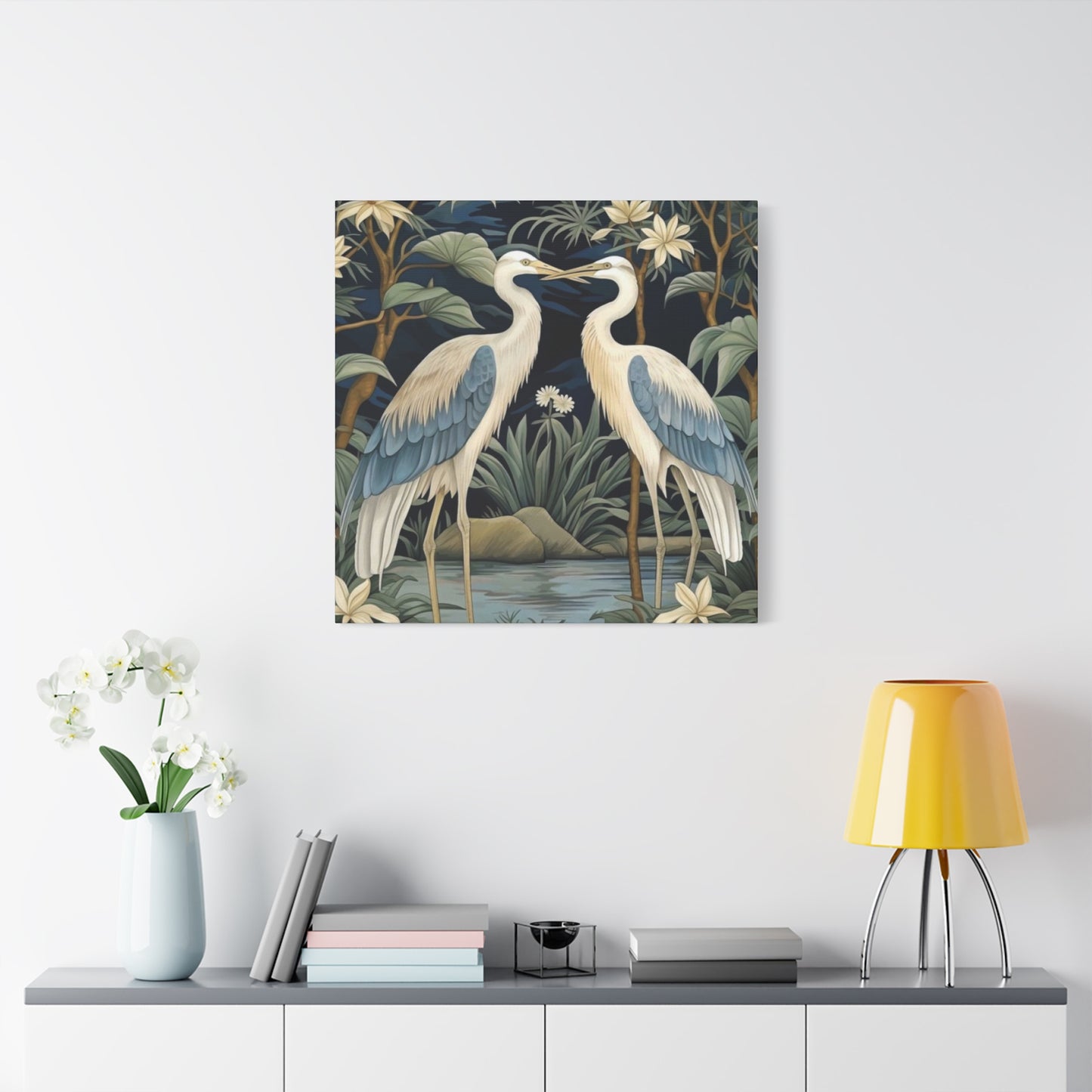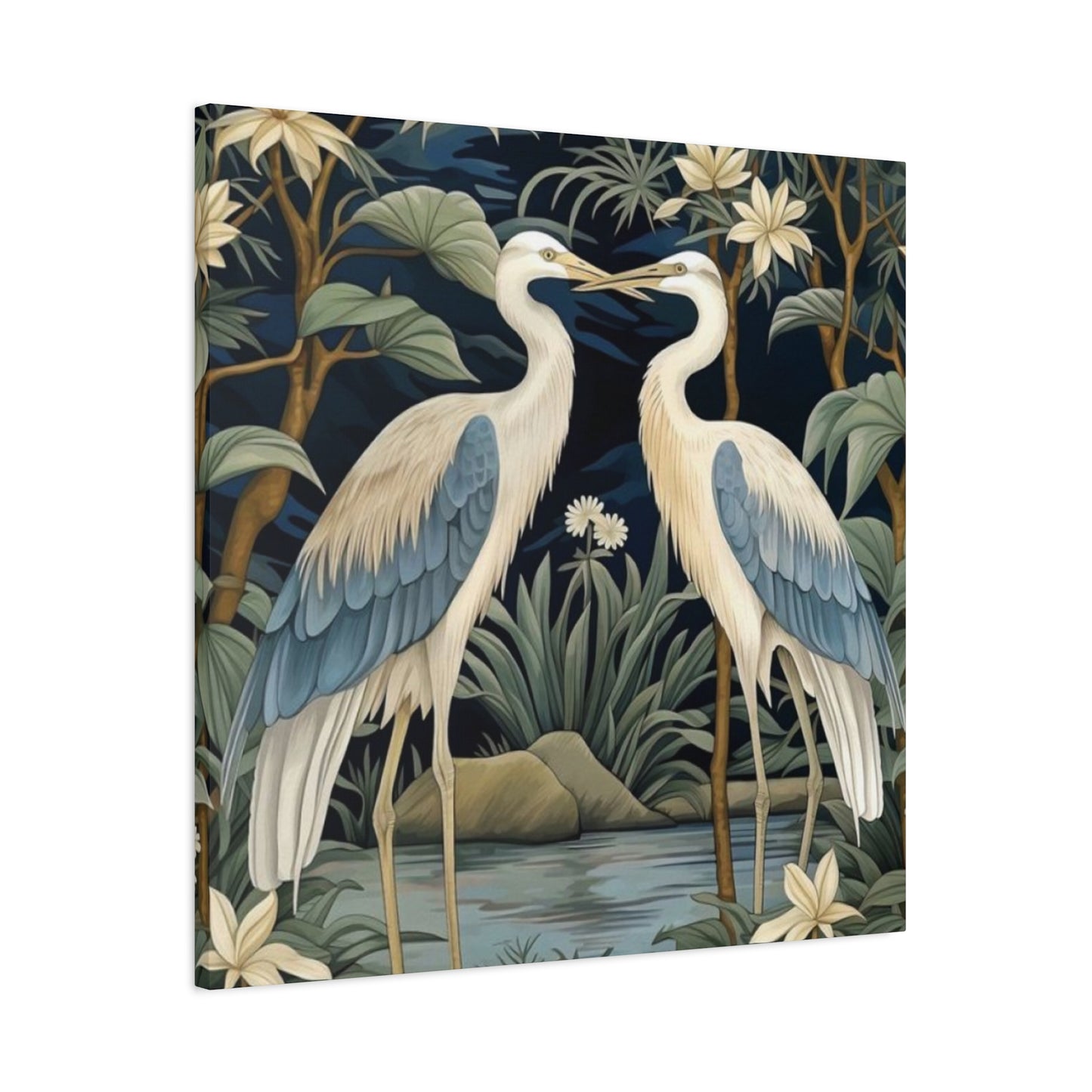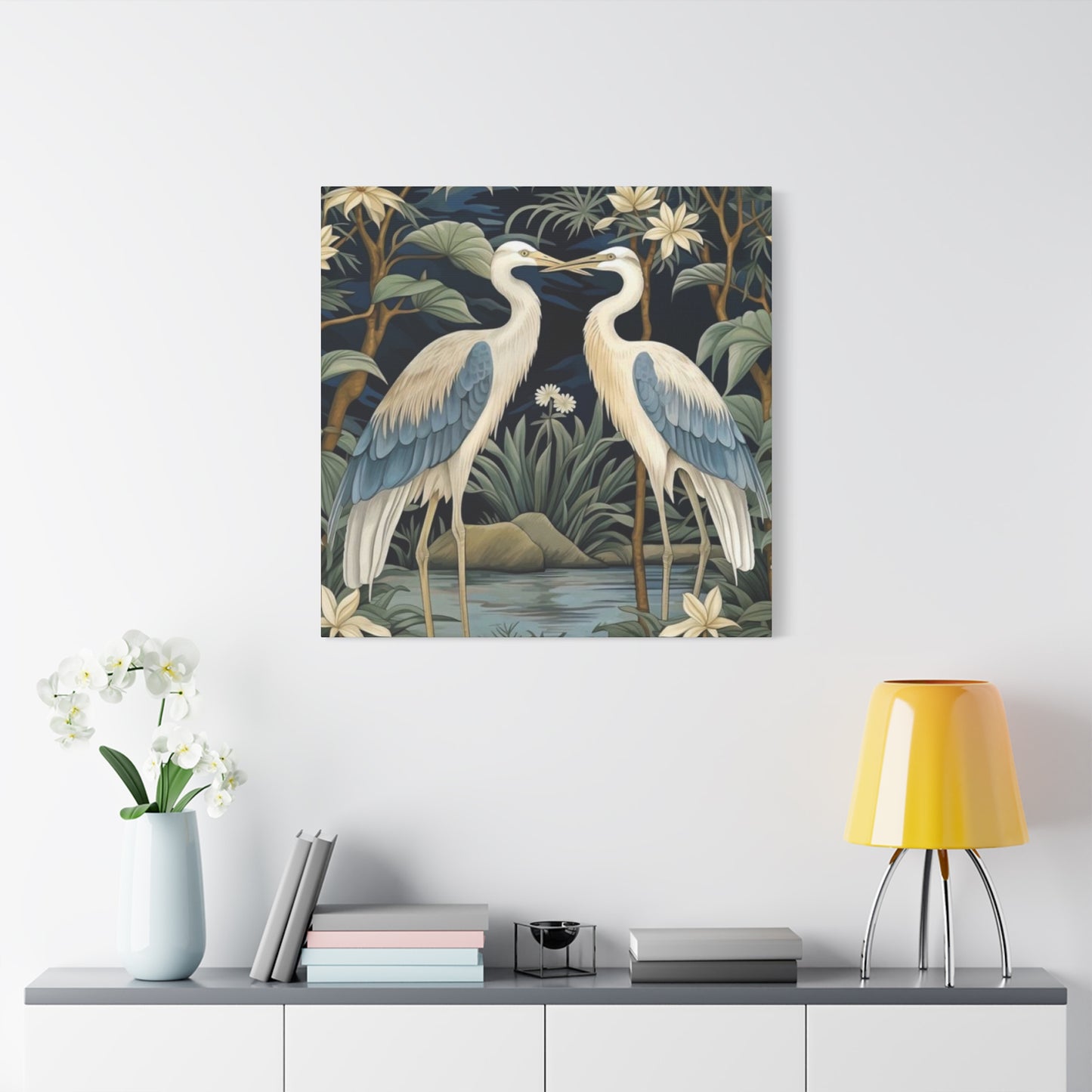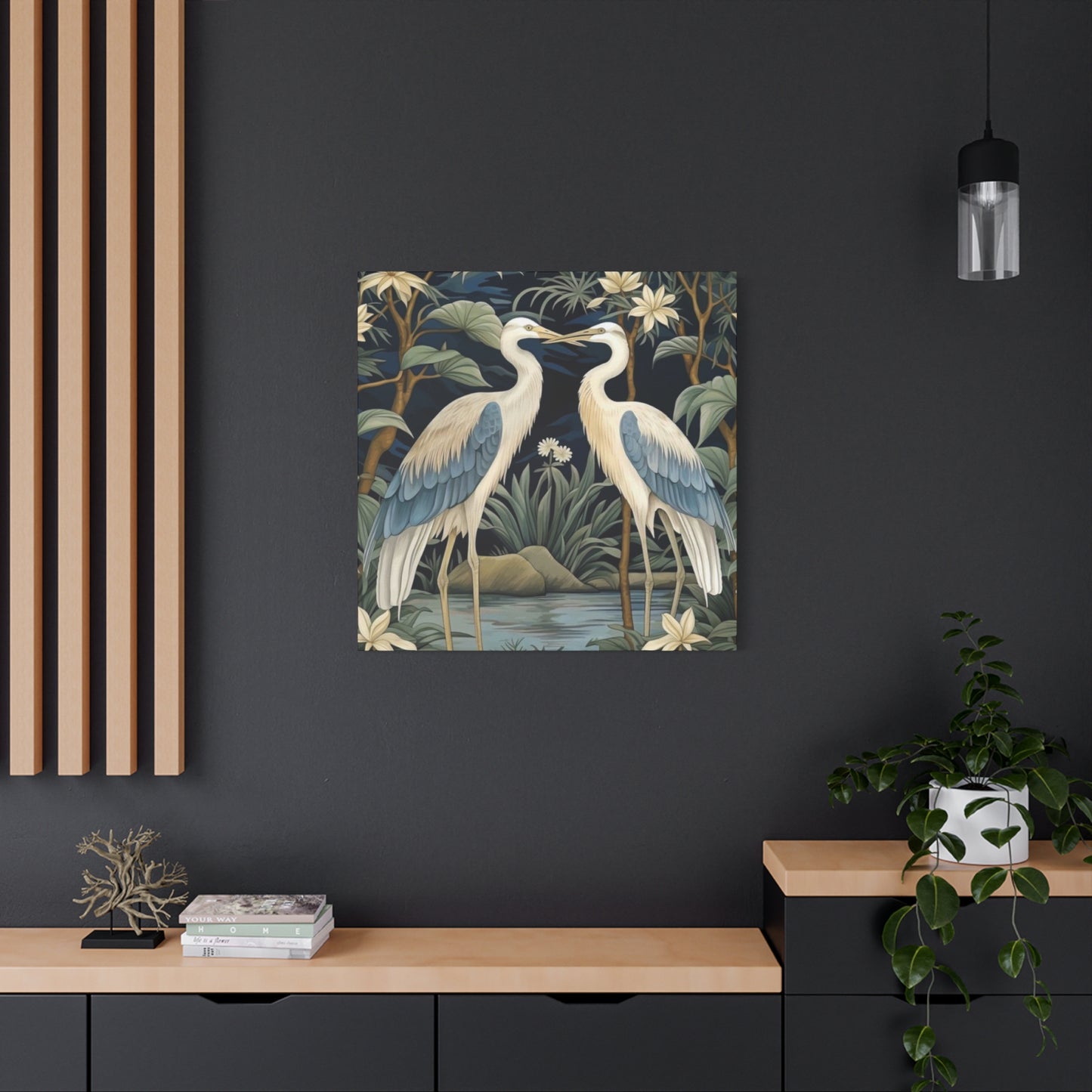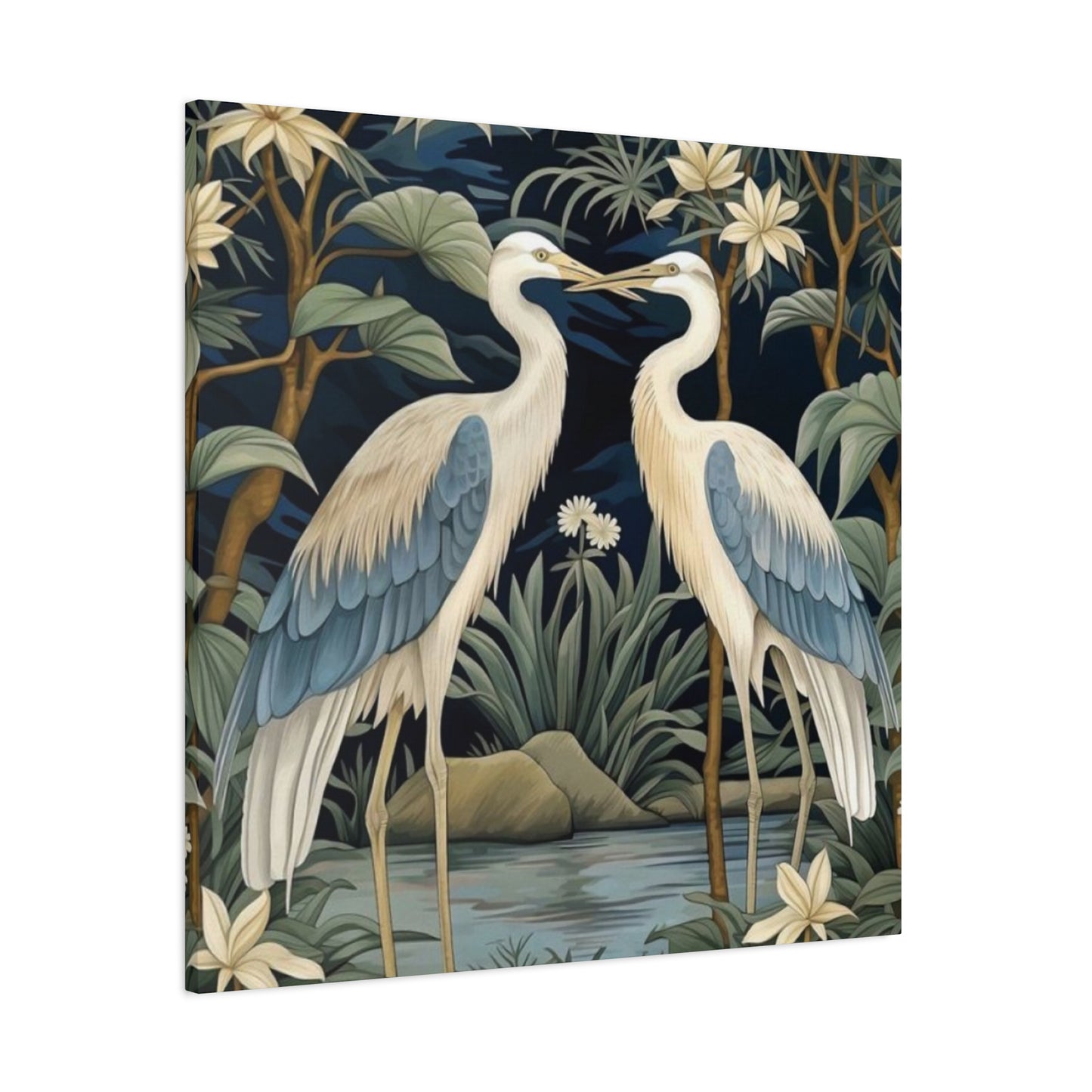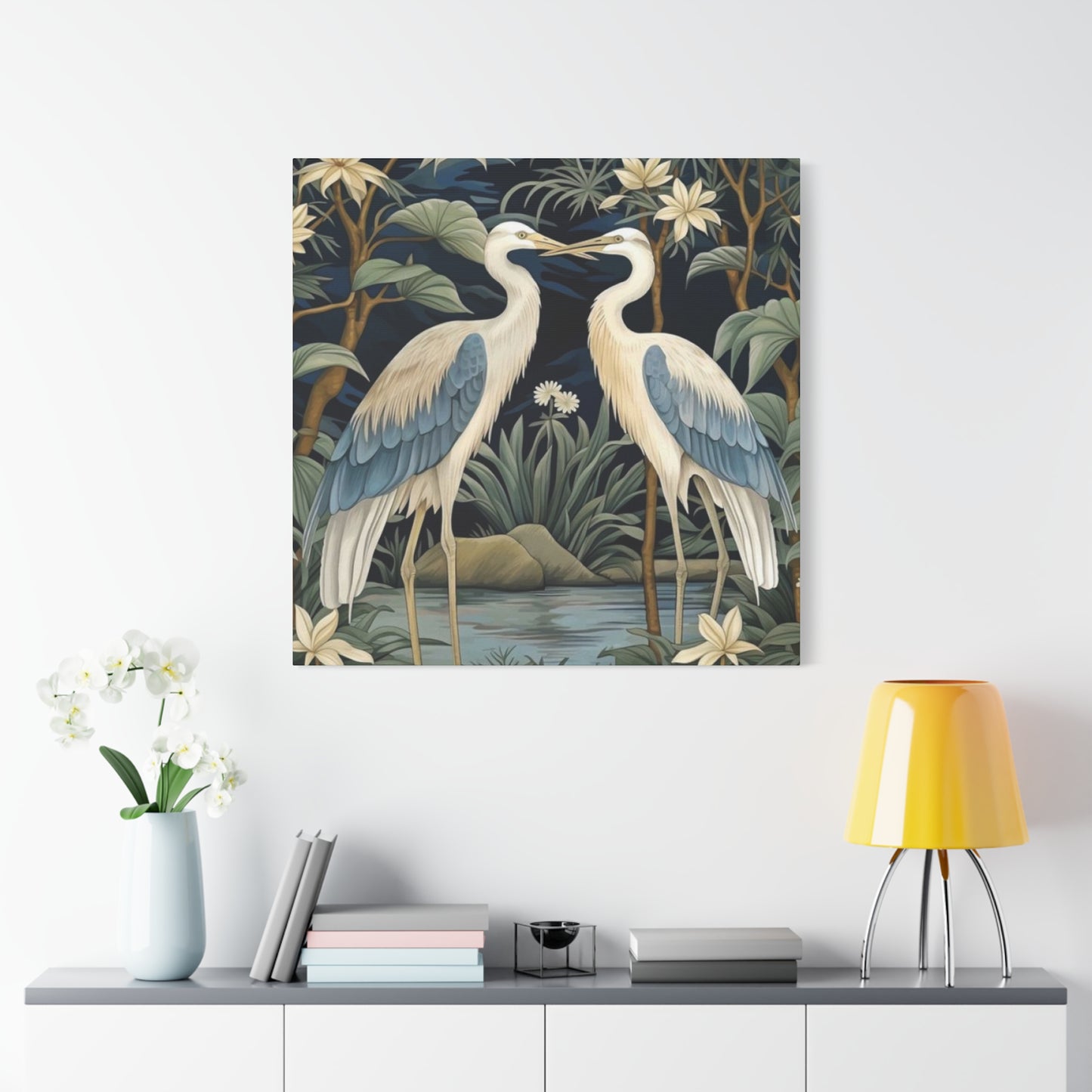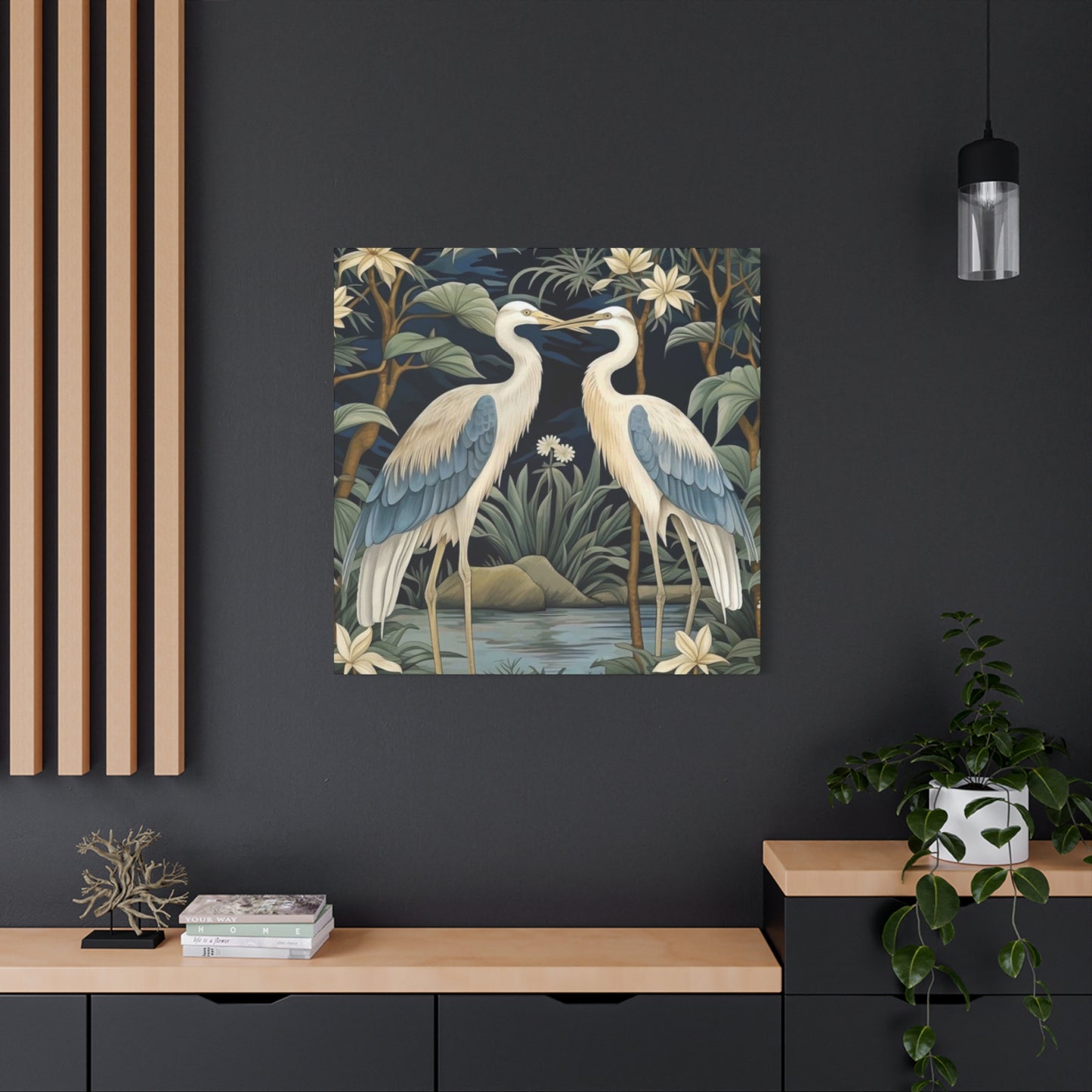Elegant and Beautiful Herons Wall Art: A Touch of Nature’s Serenity at Home
The world of interior design continually evolves, yet certain elements remain timeless in their ability to captivate and inspire. Among these enduring design choices, wildlife-themed artwork holds a special place, particularly pieces featuring majestic water birds like herons. Two beautiful herons wall art canvas prints have emerged as a sophisticated choice for homeowners, interior designers, and art enthusiasts seeking to infuse their spaces with natural elegance and tranquil beauty.
These stunning canvas prints capture the graceful essence of herons in their natural habitat, offering viewers a window into the serene world of wetlands and waterways. The appeal of such artwork transcends mere decoration, serving as a focal point that can transform any room into a sanctuary of calm and reflection. Whether displayed in living rooms, bedrooms, offices, or commercial spaces, heron canvas art brings an element of nature indoors, creating an atmosphere that promotes relaxation and contemplation.
The popularity of avian artwork has seen remarkable growth in recent years, with discerning collectors and everyday homeowners alike recognizing the value of incorporating wildlife imagery into their interior spaces. Herons, with their distinctive silhouettes, elegant postures, and symbolic significance across various cultures, have become particularly sought-after subjects for wall art. These magnificent birds represent patience, grace, and independence, qualities that resonate deeply with modern audiences seeking meaningful connections with the natural world.
Canvas prints featuring two herons offer particular aesthetic advantages, as the pairing creates visual balance and narrative interest. The composition allows artists to explore themes of companionship, harmony, and natural beauty while providing viewers with a more dynamic and engaging piece than single-subject artwork might offer. This duality adds depth to the visual experience, inviting observers to contemplate the relationship between the birds and their environment.
The Artistic Appeal of Heron Canvas Artwork
Heron wall art canvas prints possess an inherent artistic quality that distinguishes them from other forms of decorative artwork. The physical characteristics of herons provide artists with exceptional subject matter, as these birds exhibit remarkable visual qualities that translate beautifully to canvas. Their long, elegant necks create sweeping lines that draw the eye through the composition, while their distinctive plumage offers opportunities for exploring texture, color, and light.
The artistic rendering of herons on canvas allows for various stylistic interpretations, from photorealistic representations that capture every feather detail to impressionistic approaches that emphasize mood and atmosphere. Contemporary artists working with heron subjects often employ sophisticated color palettes that range from naturalistic earth tones to more adventurous combinations that enhance the decorative impact of the piece. This versatility ensures that heron canvas prints can complement diverse interior design schemes, from traditional to modern aesthetics.
The compositional possibilities inherent in heron artwork are virtually limitless. Artists may depict these birds in flight, capturing the dynamic energy of outstretched wings against expansive skies, or present them in more contemplative poses, standing motionless in shallow waters as they hunt for fish. The inclusion of environmental elements such as reeds, water reflections, misty backgrounds, or dramatic sunset skies adds layers of visual interest and emotional resonance to the artwork.
Two beautiful herons wall art canvas prints particularly excel at creating narrative within the frame. The interaction between two birds introduces elements of storytelling that engage viewers on multiple levels. Whether the herons are depicted as a mated pair, parent and offspring, or simply two individuals sharing space, their relationship becomes part of the artistic statement. This narrative quality gives the artwork staying power, as viewers continue to discover new details and interpretations with repeated viewings.
The technical execution of heron canvas prints has benefited tremendously from advances in printing technology. Modern giclée printing techniques allow for exceptional color accuracy, tonal range, and detail preservation, ensuring that reproductions maintain the integrity of original artwork. High-quality canvas materials and archival inks contribute to the longevity of these prints, allowing them to remain vibrant and visually striking for years or even decades when properly cared for.
Historical Significance of Herons in Art and Culture
Throughout human history, herons have held significant cultural and symbolic importance across numerous civilizations, making their representation in art particularly meaningful. Ancient Egyptian culture revered the heron, associating it with the Bennu bird, a symbol of creation and rebirth that predated the Greek phoenix myth. This sacred status meant herons frequently appeared in Egyptian artwork, hieroglyphics, and religious iconography, establishing a tradition of artistic representation that spans millennia.
In Asian cultures, particularly within Chinese and Japanese artistic traditions, herons have long been celebrated subjects in painting, poetry, and decorative arts. Chinese brush painting traditions often feature herons as symbols of purity, patience, and good fortune. The bird's habit of standing motionless for extended periods while hunting resonated with Taoist and Buddhist philosophies emphasizing mindfulness and present-moment awareness. Japanese artists similarly embraced heron imagery, incorporating these elegant birds into woodblock prints, scroll paintings, and textile designs.
European artistic traditions also recognized the aesthetic and symbolic value of herons. Medieval bestiaries included herons among their illustrated subjects, often attributing various moral and spiritual meanings to the birds. During the Renaissance and subsequent artistic movements, herons appeared in naturalistic paintings, particularly in works depicting wetland landscapes and hunting scenes. Dutch and Flemish masters frequently included herons in their detailed wildlife compositions, demonstrating remarkable observational skills and technical prowess.
Native American cultures developed their own rich traditions surrounding heron symbolism and representation. Many indigenous peoples viewed herons as messengers between earthly and spiritual realms, attributing wisdom and determination to these patient hunters. This spiritual significance translated into various artistic expressions, from totemic carvings to ceremonial regalia, establishing herons as important cultural icons with deep roots in indigenous worldviews.
The continuation of these historical traditions in contemporary heron wall art canvas prints creates a meaningful connection between ancient artistic practices and modern decorative preferences. When homeowners display two beautiful herons wall art canvas prints, they participate in a tradition of artistic appreciation that spans cultures and centuries. This historical depth adds layers of meaning to what might otherwise be viewed as purely decorative objects, enriching the experience of living with such artwork.
Design Versatility for Different Interior Styles
One of the most compelling aspects of heron canvas wall art is its remarkable versatility across diverse interior design styles. This adaptability ensures that two beautiful herons wall art canvas prints can find appropriate placement in virtually any decorative scheme, from rustic farmhouse aesthetics to sleek contemporary environments. Understanding how to integrate these pieces effectively requires consideration of color relationships, stylistic coherence, and spatial dynamics.
In traditional interior settings, heron canvas prints complement the established emphasis on natural materials, classical proportions, and timeless elegance. When displayed in rooms featuring wood furnishings, neutral color palettes, and conventional architectural details, heron artwork reinforces the connection to nature and outdoor pursuits that characterizes traditional design. Framing choices such as ornate gold or dark wood frames can further integrate the artwork into traditional spaces, creating cohesive visual relationships with other furnishings and accessories.
Contemporary and modern interior spaces benefit equally from the inclusion of heron wall art, though the approach differs significantly. In minimalist environments emphasizing clean lines and uncluttered surfaces, a large-scale heron canvas print can serve as a dramatic focal point, providing visual interest without introducing excessive decorative elements. The organic forms of the birds offer pleasing contrast to the geometric precision typical of modern design, creating dynamic tension that enlivens the space. Frameless canvas wraps or sleek metal frames work particularly well in these contexts, maintaining the streamlined aesthetic while showcasing the artwork effectively.
Coastal and nautical design schemes find natural affinity with heron canvas prints, as these birds are intrinsically linked to water environments. In beach houses, lakeside retreats, or urban spaces channeling coastal aesthetics, heron artwork reinforces the connection to aquatic landscapes and maritime traditions. Pairing these prints with colors drawn from seaside palettes such as soft blues, sandy neutrals, and seafoam greens creates harmonious environments that evoke the tranquility of waterfront locations.
Rustic and farmhouse interiors, characterized by weathered textures, reclaimed materials, and nature-inspired elements, provide ideal settings for heron wall art. The wildlife subject matter aligns perfectly with the back-to-nature philosophy underlying these design approaches. Distressed wood frames or barn wood mounting can enhance the rustic character of the presentation, creating pieces that appear naturally integrated into the space rather than merely hung on walls as afterthoughts.
Transitional design, which bridges traditional and contemporary aesthetics, particularly benefits from the balanced nature of two beautiful herons wall art canvas prints. The classic subject matter appeals to traditional sensibilities while the clean presentation and modern printing techniques satisfy contemporary preferences. This dual appeal makes heron canvas prints especially valuable in transitional spaces, where they serve as unifying elements that help disparate design elements cohere into satisfying wholes.
Color Psychology and Emotional Impact
The colors featured in heron canvas wall art significantly influence the emotional atmosphere of spaces where they are displayed. Understanding color psychology helps homeowners and designers select artwork that supports their desired mood and functional goals for different rooms. Two beautiful herons wall art canvas prints typically incorporate color palettes drawn from natural environments, offering psychological benefits associated with nature-inspired hues.
Blue tones, frequently present in heron artwork through sky and water representations, promote feelings of calm, stability, and serenity. Psychological research consistently demonstrates that blue environments reduce stress, lower blood pressure, and create atmospheres conducive to relaxation and contemplation. When heron canvas prints feature prominent blue elements, they contribute to peaceful room atmospheres particularly suitable for bedrooms, meditation spaces, or areas designated for stress relief and recovery.
Green hues, often appearing in vegetation, reeds, and wetland settings within heron compositions, connect viewers with nature and promote feelings of balance, growth, and renewal. Greens have restorative psychological effects, reducing eye strain and creating environments that feel fresh and rejuvenating. Heron artwork incorporating rich green elements works exceptionally well in home offices, creative studios, or any space where mental clarity and sustained focus are desired.
Warm tones such as oranges, golds, and soft reds frequently appear in heron canvas prints depicting sunrise or sunset scenes. These warm colors stimulate energy, optimism, and social connection, making them excellent choices for communal spaces like living rooms, dining areas, or family rooms where interaction and engagement are encouraged. The warm glow of golden hour lighting in heron artwork creates inviting atmospheres that draw people together and facilitate conversation.
Neutral tones including grays, taupes, and soft browns provide grounding influences that promote stability and sophistication. Heron artwork emphasizing neutral palettes offers maximum decorating flexibility, as these colors coordinate easily with diverse furnishing choices and can adapt as room color schemes evolve over time. The understated elegance of neutral-toned heron prints appeals to those seeking refined sophistication without overwhelming visual drama.
The contrast between light and dark elements within heron canvas prints also carries psychological significance. High-contrast compositions create visual excitement and dynamic energy, while low-contrast pieces promote tranquility and subtle sophistication. Understanding these dynamics allows for strategic artwork selection that supports specific emotional goals for different spaces within the home or commercial environment.
Size Considerations and Spatial Planning
Selecting appropriately sized heron canvas wall art requires careful consideration of room dimensions, viewing distances, and surrounding furnishings. Two beautiful herons wall art canvas prints are available in numerous size options, from modest accent pieces to dramatic statement installations. Understanding how to match artwork scale to spatial context ensures maximum visual impact and decorative success.
Small to medium-sized heron prints, typically ranging from twelve to twenty-four inches in their largest dimension, work well as accent pieces within gallery wall arrangements or in intimate spaces like powder rooms, hallways, or reading nooks. These modest scales allow the artwork to contribute to the overall decorative scheme without overwhelming limited square footage. When working with smaller heron prints, consider creating visual impact through grouping multiple pieces or pairing them with complementary artwork featuring related themes or color palettes.
Medium to large heron canvas prints, measuring approximately thirty to forty-eight inches across, function effectively as focal points in standard residential rooms including bedrooms, dining rooms, and home offices. At this scale, the artwork commands attention without requiring excessive wall space, making it accessible for typical room dimensions. These sizes work particularly well above furniture pieces like beds, sofas, or console tables, where they create visual anchors that ground seating or sleeping arrangements.
Oversized heron canvas prints, exceeding sixty inches or more in width, create dramatic statements suitable for spacious rooms with high ceilings or extensive wall expanses. These impressive pieces transform walls into artistic features, essentially functioning as architectural elements rather than mere decorations. Large-scale heron artwork particularly suits contemporary loft spaces, great rooms with cathedral ceilings, commercial lobbies, or luxury residences where dramatic visual impact is desired.
The relationship between artwork size and viewing distance follows general design principles suggesting that optimal viewing occurs when the distance from the artwork equals approximately one and a half to two times its width. Applying this principle helps determine whether chosen heron canvas prints will be comfortably viewable from primary seating or standing positions within the room. Artwork sized too large for its viewing distance can feel overwhelming, while pieces too small may fail to register as significant design elements.
Proportional relationships between heron canvas prints and furniture dimensions also require attention. When hanging artwork above sofas, beds, or other furniture, designers typically recommend that the artwork width measure approximately two-thirds to three-quarters the width of the furniture below. This proportion creates visual balance and prevents the artwork from appearing either lost on the wall or awkwardly oversized relative to its supporting furniture. Two beautiful herons wall art canvas prints selected with these proportional considerations in mind integrate seamlessly into room compositions.
Placement Strategies for Maximum Impact
Strategic placement of heron wall art significantly influences its decorative effectiveness and visual impact. Beyond simply selecting appropriate sizes, thoughtful consideration of positioning, height, lighting, and surrounding context determines whether artwork achieves its full potential within interior spaces. Two beautiful herons wall art canvas prints benefit from intentional placement strategies that showcase their beauty while supporting room functionality.
The standard recommendation for artwork hanging height suggests positioning pieces so their centers align approximately fifty-seven to sixty inches from the floor, corresponding roughly to average adult eye level. This guideline works well in spaces where viewers primarily stand, such as hallways, entryways, or gallery walls. However, in rooms where people predominantly sit, such as living rooms or dining rooms, slightly lower positioning often proves more appropriate, ensuring comfortable viewing from seated positions.
Above furniture placement requires special attention to both height and compositional balance. When hanging heron canvas prints above sofas, beds, or console tables, maintain approximately six to eight inches of space between the furniture top and the artwork bottom. This separation prevents the pieces from appearing to rest on the furniture while maintaining clear visual connection between the elements. If working with particularly tall headboards or high-backed sofas, slightly more separation may prove appropriate to maintain proper proportional relationships.
Creating gallery walls or multi-piece arrangements with heron canvas prints allows for creative expression and visual storytelling. When designing gallery walls, begin by laying out the complete arrangement on the floor, experimenting with spacing and orientation until achieving satisfying composition. Maintain consistent spacing between pieces, typically two to three inches, to create cohesive unified presentations rather than disconnected collections of individual works. Two beautiful herons wall art canvas prints can anchor such arrangements, serving as focal pieces around which smaller complementary works are organized.
Corner placement offers unique opportunities for heron wall art, particularly in rooms where traditional center-wall positions are unavailable due to architectural features or furniture arrangements. Positioning canvas prints in corners can activate underutilized spaces, creating cozy vignettes that draw attention to room areas that might otherwise go unnoticed. When working with corner placements, ensure adequate lighting reaches the artwork and consider how pieces will be viewed from multiple room angles.
Lighting dramatically influences how heron canvas prints appear and how effectively they contribute to room ambiance. Natural light showcases colors beautifully but requires consideration of sun exposure intensity and duration to prevent fading. Position artwork away from direct, prolonged sunlight or use window treatments to diffuse harsh rays during peak hours. For artificial lighting, picture lights, track lighting, or strategically positioned accent lights can highlight heron artwork effectively, creating focal points that draw attention and add dimension to wall surfaces.
Material Quality and Canvas Construction
The physical construction and material quality of heron canvas wall art significantly impact both aesthetic appeal and longevity. Understanding the components that comprise high-quality canvas prints helps consumers make informed purchasing decisions, ensuring they acquire pieces that will maintain their beauty and structural integrity over extended periods. Two beautiful herons wall art canvas prints vary considerably in quality based on materials, construction methods, and finishing techniques employed in their production.
Canvas substrate selection forms the foundation of print quality and durability. Premium canvas prints utilize either cotton or polyester canvas, each offering distinct advantages. Cotton canvas, particularly museum-grade cotton duck canvas, provides traditional texture and appearance that many art connoisseurs prefer. The natural fiber construction offers excellent ink absorption and color representation while maintaining the authentic look and feel associated with original paintings. Polyester canvas alternatives offer enhanced durability, moisture resistance, and dimensional stability, making them excellent choices for environments with variable humidity or temperature conditions.
The canvas weight, measured in ounces per square yard, indicates material thickness and durability. Higher weight canvases, typically ranging from eight to twenty ounces, provide superior structural integrity and resist sagging or warping over time. For heron wall art canvas prints intended as long-term investments, selecting heavier weight materials ensures the pieces maintain their taut, professional appearance even after years of display. The texture of canvas weave also influences final appearance, with options ranging from fine, smooth surfaces to more pronounced textures that create painterly effects.
Printing technology employed in producing heron canvas artwork determines color accuracy, detail resolution, and fade resistance. Giclée printing, the gold standard for fine art reproduction, utilizes professional-grade inkjet printers capable of producing millions of color variations with exceptional accuracy. These systems employ archival pigment-based inks rather than dye-based alternatives, ensuring superior lightfastness and longevity. Quality heron canvas prints should specify giclée production and archival inks, indicating commitment to museum-quality standards that preserve artwork appearance for decades or longer.
Stretching and mounting techniques significantly impact the finished appearance and structural integrity of canvas prints. Gallery wrap construction, where canvas extends around frame edges and is secured on the back, creates clean, contemporary presentations that require no additional framing. The depth of stretcher bars, typically ranging from three-quarters of an inch to two inches, determines the dimensional profile of mounted canvas. Deeper stretcher bars create more dramatic shadow lines and substantial wall presence, while standard depths offer traditional profiles suitable for most interior applications.
Coating and finishing processes applied after printing protect heron canvas artwork from environmental damage and enhance visual properties. UV-protective coatings guard against color fading caused by light exposure, significantly extending the life of prints displayed in bright rooms or near windows. Some finishing processes add subtle glossy or matte finishes that influence how light interacts with the artwork surface, allowing customization to match personal preferences or coordinate with specific interior design schemes.
Wildlife Art as Biophilic Design Element
The incorporation of wildlife imagery like heron canvas prints into interior spaces reflects broader biophilic design principles that recognize human beings' innate connection to nature. Biophilic design intentionally integrates natural elements into built environments, promoting psychological well-being, cognitive function, and physical health through nature-inspired features. Two beautiful herons wall art canvas prints serve as accessible biophilic design elements that bring nature indoors without requiring extensive architectural modifications or substantial investments.
Research in environmental psychology consistently demonstrates that exposure to nature imagery, even in representational forms like artwork, produces measurable psychological and physiological benefits. Studies show that viewing nature scenes reduces stress hormone levels, lowers blood pressure and heart rate, and improves mood states. These effects occur even with brief exposures to nature imagery, suggesting that simply having heron canvas prints visible in daily living environments can contribute meaningfully to overall wellness and quality of life.
The specific choice of herons as artistic subjects offers particular biophilic advantages. As water birds inhabiting wetland ecosystems, herons connect viewers with aquatic environments that hold special psychological significance. Water features and imagery consistently rank among the most restorative natural elements in environmental psychology research, with particular effectiveness in promoting relaxation and mental restoration. Heron artwork thus provides double biophilic value, incorporating both wildlife representation and water environment associations that compound positive psychological effects.
Biophilic design principles extend beyond simple nature imagery to consider authentic representation and ecological context. High-quality heron canvas prints that accurately depict natural behaviors, realistic habitat settings, and appropriate ecological relationships offer greater biophilic value than stylized or fantastical representations. When herons are shown in natural poses within authentic wetland settings, viewers subconsciously register the ecological integrity of the scene, creating deeper connections and more substantial restorative effects than abstract or disconnected imagery might provide.
The visual complexity present in naturalistic heron artwork also contributes to biophilic benefits. Natural scenes typically contain moderate levels of visual complexity that engage attention without overwhelming cognitive processing. Two beautiful herons wall art canvas prints featuring detailed environmental contexts, varied textures, and subtle color gradations provide this optimal complexity level, creating engaging focal points that hold interest through repeated viewings while maintaining calming rather than overstimulating qualities.
Integrating heron canvas prints into biophilic design strategies works synergistically with other nature-inspired elements. Combining wildlife artwork with houseplants, natural material furnishings, nature-inspired color palettes, and access to natural light creates comprehensive biophilic environments that maximize psychological and physiological benefits. In spaces where extensive natural elements prove impractical due to maintenance requirements or spatial limitations, heron wall art offers low-maintenance nature connection that requires only periodic dusting to maintain its biophilic contributions.
Seasonal Decorating with Heron Canvas Art
The timeless quality of heron canvas wall art makes it suitable for year-round display, yet creative homeowners can enhance its impact through seasonal decorating strategies that highlight different aspects of the artwork throughout the year. Two beautiful herons wall art canvas prints possess sufficient visual richness to support varied seasonal interpretations, allowing them to participate in evolving decorative schemes without requiring storage or replacement as seasons change.
During spring months, when nature awakens and renewal themes dominate, heron canvas prints can be highlighted through coordinating accessories that emphasize fresh growth and new beginnings. Surrounding the artwork with botanical elements like flowering branches in tall vases, incorporating pastel accent colors through throw pillows or decorative objects, and introducing light, airy textiles creates springtime ambiance that complements the natural subject matter. The patience and attentiveness herons demonstrate while hunting can be metaphorically linked to spring themes of watching for new opportunities and growth.
Summer decorating approaches might emphasize the water connections inherent in heron imagery, creating cooling visual effects appropriate for warmer months. Pairing heron canvas prints with blue and white color schemes, incorporating nautical or tropical accent pieces, and using natural fiber textures like jute or seagrass reinforces aquatic themes. Seasonal accessories might include shells, driftwood, or coral specimens that echo the wetland habitats where herons thrive, creating cohesive nature-inspired vignettes that celebrate summer's outdoor living emphasis.
Autumn presentations can draw on the rich earth tones often present in heron canvas prints, particularly in pieces featuring sunset skies or fall-colored vegetation. Coordinating the artwork with seasonal elements like dried grasses, autumn leaves, pumpkins, or harvest-themed accessories creates warm, welcoming displays appropriate for cooler months. The harvest associations of autumn align well with herons' role as skilled hunters, allowing for subtle thematic connections that add depth to seasonal decorating efforts.
Winter styling might emphasize the quiet, contemplative qualities of heron imagery, playing up themes of stillness, patience, and introspection appropriate for the season. Surrounding two beautiful herons wall art canvas prints with white or silver accent pieces, incorporating evergreen branches or winter berry stems, and using plush textiles in cool color palettes creates serene winter environments. The solitary nature of herons resonates with winter's invitation to interior reflection and rest, making the artwork particularly poignant during these quieter months.
Flexible decorating accessories allow heron canvas prints to participate in seasonal changes without overwhelming the artwork or appearing forced. Simple adjustments like changing throw pillow colors on nearby seating, rotating decorative objects on adjacent surfaces, or modifying window treatment fabrics can refresh the context surrounding heron artwork without requiring major redecorating efforts. This approach maintains the timeless quality of the canvas prints while allowing them to feel fresh and relevant as seasons progress.
Creating Focal Points in Room Design
Two beautiful herons wall art canvas prints excel as focal point elements in room design, drawing attention and organizing visual flow within interior spaces. Understanding how to leverage artwork as effective focal points requires consideration of scale relationships, positioning strategies, and supporting design elements that direct attention appropriately. When thoughtfully implemented, heron canvas prints anchor room compositions and provide clear visual destinations that guide how spaces are perceived and experienced.
Focal points function as visual hierarchies within rooms, establishing primary, secondary, and tertiary areas of interest that create organized rather than chaotic visual experiences. Heron canvas prints positioned as primary focal points should command immediate attention upon entering a room, achieved through strategic placement opposite doorways, above major furniture pieces, or on walls with advantageous lighting. The impressive nature of heron subjects, particularly when depicted at substantial scale or in dramatic compositional arrangements, naturally attracts attention and holds viewer interest.
Supporting the focal point status of heron artwork requires careful consideration of competing visual elements within the space. Surrounding walls should maintain relative simplicity, avoiding busy wallpaper patterns or excessive additional artwork that might dilute attention. Furniture arrangements ideally orient toward the heron canvas prints, with seating groups positioned to allow comfortable viewing and conversation areas arranged to include the artwork within sightlines. This intentional orientation reinforces the artwork's focal point status and ensures it functions as an integral component of room design rather than an afterthought.
Lighting plays crucial roles in establishing and maintaining focal point effectiveness. Accent lighting directed specifically at heron canvas prints increases their visual prominence, creating pools of light that naturally draw attention even in otherwise dimly lit spaces. Track lighting, picture lights, or strategically positioned spot lights can dramatically enhance the focal point impact of artwork, particularly in evening hours when natural light diminishes. The interplay of light and shadow across canvas textures adds dimensional quality that flat wall surfaces cannot provide, further distinguishing the artwork as special features worthy of attention.
Color relationships between heron canvas prints and surrounding design elements influence focal point strength. When artwork contains colors that contrast with wall colors and major furnishings, its visual impact intensifies, making it read as more prominent focal point. Conversely, when artwork colors harmonize closely with room color schemes, integration appears more seamless though potentially at some cost to immediate visual impact. Strategic decisions about color relationships should align with overall design goals, balancing desire for focal point prominence against preferences for cohesive, unified aesthetic experiences.
The principle of negative space applies importantly to focal point effectiveness. Surrounding heron canvas prints with adequate empty wall space prevents visual crowding and allows the artwork to breathe, increasing its impact and readability. Designers typically recommend leaving margins of at least twelve to eighteen inches of clear wall space around significant artwork pieces, though larger margins often prove even more effective in allowing pieces to claim appropriate visual territory. This negative space functions as visual framing, directing attention inward toward the artwork itself.
Complementary Decor and Styling Accessories
Creating cohesive interior environments around two beautiful herons wall art canvas prints requires thoughtful selection of complementary decor and styling accessories that enhance rather than compete with the artwork. The goal involves developing layered, interesting spaces where individual elements relate harmoniously while maintaining distinct identities. Heron canvas prints serve as anchoring pieces around which supporting accessories can be arranged, creating vignettes and room compositions that feel intentional and professionally designed.
Decorative objects drawn from natural materials create obvious synergies with wildlife artwork like heron canvas prints. Elements such as driftwood sculptures, stone or mineral specimens, dried botanicals, woven baskets, or ceramic vessels with organic forms reinforce the nature connection inherent in the artwork. These natural accessories need not literally relate to wetland environments; rather, their material authenticity and handcrafted qualities support the broader nature-inspired aesthetic that heron imagery represents. Arranging such objects on surfaces near the canvas prints creates visual conversations between two-dimensional artwork and three-dimensional accessories.
Textile selections significantly impact how heron canvas prints integrate into room designs. Throw pillows, blankets, curtains, and upholstery fabrics that echo colors from the artwork create color continuity that unifies room schemes. Rather than exact color matching, which can appear overly coordinated, selecting textiles that relate to undertones or accent colors from the heron canvas prints achieves sophisticated cohesion. Natural fiber textiles like linen, cotton, jute, or wool complement the organic subject matter, introducing tactile variety that enriches sensory experiences beyond purely visual considerations.
Botanical elements, whether live plants or high-quality artificial alternatives, enhance the nature connection established by heron wall art. Tall grasses in floor vases can echo the reed-filled wetland habitats where herons live, while potted ferns or tropical plants introduce lush greenery that amplifies the natural atmosphere. Even simple branches arranged in tall containers create vertical lines that relate to the elegant neck lines characteristic of heron anatomy, establishing subtle formal relationships between artwork and accessories.
Lighting fixtures selected to complement heron canvas prints should consider both functional illumination needs and decorative contributions. Table lamps, floor lamps, or pendant fixtures featuring natural materials like wood, rattan, or stone coordinate well with wildlife artwork, maintaining consistent nature-inspired aesthetics. Lampshade colors ideally relate to the color palette present in the heron prints, whether through direct color matching or through neutral tones that allow the artwork to remain the primary color focus.
Books, particularly those featuring nature photography, wildlife subjects, or environmental themes, make excellent styling accessories near heron canvas prints. Stacked on coffee tables or displayed on nearby shelving, these volumes reinforce the intellectual and cultural dimensions of nature appreciation that the artwork represents. Similarly, incorporating vintage or antique objects like brass telescopes, wooden duck decoys, or framed botanical prints creates collected, layered looks that suggest long-term engagement with nature subjects rather than superficial decorating trends.
Color Coordination Strategies
Developing effective color coordination strategies around two beautiful herons wall art canvas prints ensures the artwork integrates harmoniously into overall room color schemes while maintaining its visual impact. Color relationships determine whether spaces feel cohesive and professionally designed or random and disjointed. Understanding basic color theory principles and applying them to artwork integration creates sophisticated results that showcase both the heron canvas prints and the surrounding interior environment.
Monochromatic color schemes, which utilize various shades, tints, and tones of a single color family, create serene, sophisticated spaces where heron canvas prints can shine as primary visual interest. When artwork contains varied tones of blue, for example, decorating the surrounding space in complementary blues from pale sky shades to deep navy creates immersive environments with strong color impact. The variation in value and saturation prevents monotony while maintaining color family consistency that feels intentional and refined.
Analogous color schemes, employing colors adjacent on the color wheel, offer slightly more variety while maintaining harmonious relationships. Heron canvas prints featuring blues and greens work beautifully in analogous schemes that incorporate these nature-inspired hues throughout the space. The smooth transitions between related colors create restful environments with subtle complexity, ideal for bedrooms, meditation spaces, or areas designated for relaxation. Analogous approaches feel naturally cohesive since these color relationships occur frequently in nature.
Complementary color strategies, using colors opposite on the color wheel, create dynamic, energetic spaces with strong visual contrast. If heron canvas prints feature prominent blue elements, incorporating orange or warm gold accessories creates vibrant complementary relationships that make both colors appear more intense. This approach suits spaces where energy and visual excitement are desired, though judicious application prevents overwhelming results. Rather than equal amounts of complementary colors, using one as the dominant palette and the other as accent color typically produces more sophisticated results.
Neutral-dominated color schemes provide flexible frameworks for showcasing heron canvas prints without color competition. Decorating primarily with whites, grays, beiges, and other neutrals allows the colors within the artwork to provide primary color interest. This approach particularly suits contemporary and minimalist aesthetics where restraint and simplicity guide design decisions. The relative absence of competing color draws maximum attention to the heron canvas prints, ensuring they function as both color source and focal point within otherwise subdued environments.
Accent color strategies allow homeowners to draw out specific colors from heron canvas prints and echo them selectively throughout spaces. Identifying one or two accent colors within the artwork and repeating them through accessories, textiles, or painted elements creates rhythmic color relationships that unify room designs. This approach works particularly well with complex, multi-colored heron prints where numerous color options exist for potential emphasis, allowing decorating flexibility as tastes evolve or seasonal changes are desired.
Framing Options and Presentation Styles
The framing and presentation approach selected for two beautiful herons wall art canvas prints significantly influences their visual impact, style compatibility, and integration into interior environments. While canvas prints can be displayed without traditional frames through gallery wrap presentations, various framing options exist that offer different aesthetic effects and practical benefits. Understanding available presentation styles helps homeowners and designers make informed choices that optimize how heron artwork appears within specific contexts.
Gallery wrap presentation, the most common approach for modern canvas prints, extends the printed image around the edges of stretcher bars, creating finished sides that require no additional framing. This contemporary presentation style suits minimalist, modern, and transitional interiors where streamlined appearances are desired. Gallery wraps allow the artwork to stand independently as dimensional objects rather than pictures contained within frames, emphasizing the painting-like quality that distinguishes canvas prints from paper prints or photographs.
Mirror wrap edge treatment creates gallery wrap presentations where edge imagery mirrors the content immediately adjacent to the canvas border. This technique prevents important image elements from disappearing around canvas sides while maintaining frameless contemporary aesthetics. For heron canvas prints where compositional elements extend close to edges, mirror wrapping ensures visual continuity and prevents the appearance of cropping or incomplete imagery.
Color wrap approaches extend solid colors from canvas borders around stretcher bar edges, typically matching the dominant or background colors from the artwork. This clean, simple edge treatment maintains focus on front-facing imagery while creating tidy side appearances. For heron prints featuring significant background areas like sky or water, color wrapping in appropriate blues, grays, or neutrals produces professional results that read as intentional design choices rather than technical necessities.
Traditional framing with wood, metal, or composite frames offers classic presentation styles that suit traditional, rustic, or formal interior settings. Frame selection should consider the color palette, style, and mood of both the heron canvas prints and the surrounding room design. Natural wood frames in various finishes from light oak to dark walnut coordinate beautifully with wildlife subjects, reinforcing nature connections through material choices. The frame profile, or molding style, ranges from simple, narrow designs that provide subtle borders to ornate, wide profiles that create substantial architectural presence.
Floating frame presentations suspend gallery-wrapped canvases within frame structures, creating gaps between canvas edges and frame sides. This contemporary approach combines the clean edges of gallery wraps with the finished, architectural quality that frames provide. The dimensional quality of floating frames creates sophisticated presentations that work well in transitional spaces bridging traditional and contemporary aesthetics. For two beautiful herons wall art canvas prints, floating frames add premium qualities that suggest investment pieces rather than disposable decorations.
Conclusion
Elegant and beautiful herons wall art is a captivating way to bring the tranquil beauty of nature into your home. These graceful birds, with their long legs, slender necks, and poised presence, symbolize patience, resilience, and serenity—qualities that resonate deeply with many people seeking calm and balance in their living spaces. By incorporating heron-themed artwork into your décor, you invite a sense of peace, elegance, and natural harmony that can transform any room into a soothing sanctuary.
Herons have long been admired for their majestic appearance and graceful movements. Often found in wetlands, rivers, and lakes, these birds embody a quiet strength and a connection to water’s calming influence. Herons wall art captures these qualities through delicate, flowing lines and serene compositions, evoking the gentle rhythm of nature. Whether depicted standing silently by the water’s edge, taking flight against a soft sky, or nestled amidst reeds and lilies, heron artwork brings a soothing, meditative quality to your environment.
Beyond their visual appeal, herons carry deep symbolism across cultures and traditions. They often represent tranquility, self-reliance, and renewal, inspiring viewers to cultivate patience and mindfulness in their own lives. Incorporating heron art into your home serves as a gentle reminder to slow down, reflect, and embrace the natural flow of life. This symbolism makes heron wall art especially meaningful for those who value spiritual growth and personal transformation, offering both aesthetic pleasure and emotional resonance.
In terms of décor, heron wall art offers remarkable versatility. Whether you prefer realistic paintings, minimalist line art, or abstract interpretations, there are countless styles to suit different tastes and interiors. The subtle, natural color palettes commonly used in heron art—soft blues, grays, greens, and earth tones—blend effortlessly with a variety of design themes, from coastal and rustic to modern and minimalist. This adaptability makes heron artwork a perfect choice for bedrooms, living rooms, offices, or any space where tranquility and elegance are desired.
Moreover, heron wall art fosters a deeper connection with nature, even within urban or indoor environments. In a world where many people spend much of their time indoors or in busy cityscapes, bringing elements of the natural world into home décor helps restore a sense of calm and well-being. Herons, as symbols of balance between land and water, encourage a harmonious lifestyle, reminding us to seek peace amid life’s busyness. Displaying heron art can thus enhance mental and emotional health by creating a serene, nature-inspired atmosphere.
Heron wall art also makes a thoughtful and meaningful gift. Its symbolism of patience and renewal is perfect for marking new beginnings, personal milestones, or moments of reflection. Whether given to a loved one or chosen for yourself, heron artwork is a lasting tribute to the beauty of nature and the virtues it inspires.
In conclusion, elegant and beautiful herons wall art offers more than just decorative appeal—it brings a touch of nature’s serenity into your home. By capturing the grace and symbolism of these majestic birds, heron art transforms living spaces into calming sanctuaries that nurture both the eye and the soul. Whether you are drawn to realistic depictions or artistic abstractions, incorporating heron wall art into your décor invites peace, mindfulness, and a deeper appreciation for the natural world. Embrace the timeless elegance and tranquility of herons, and let their serene presence enrich your home and life.

















